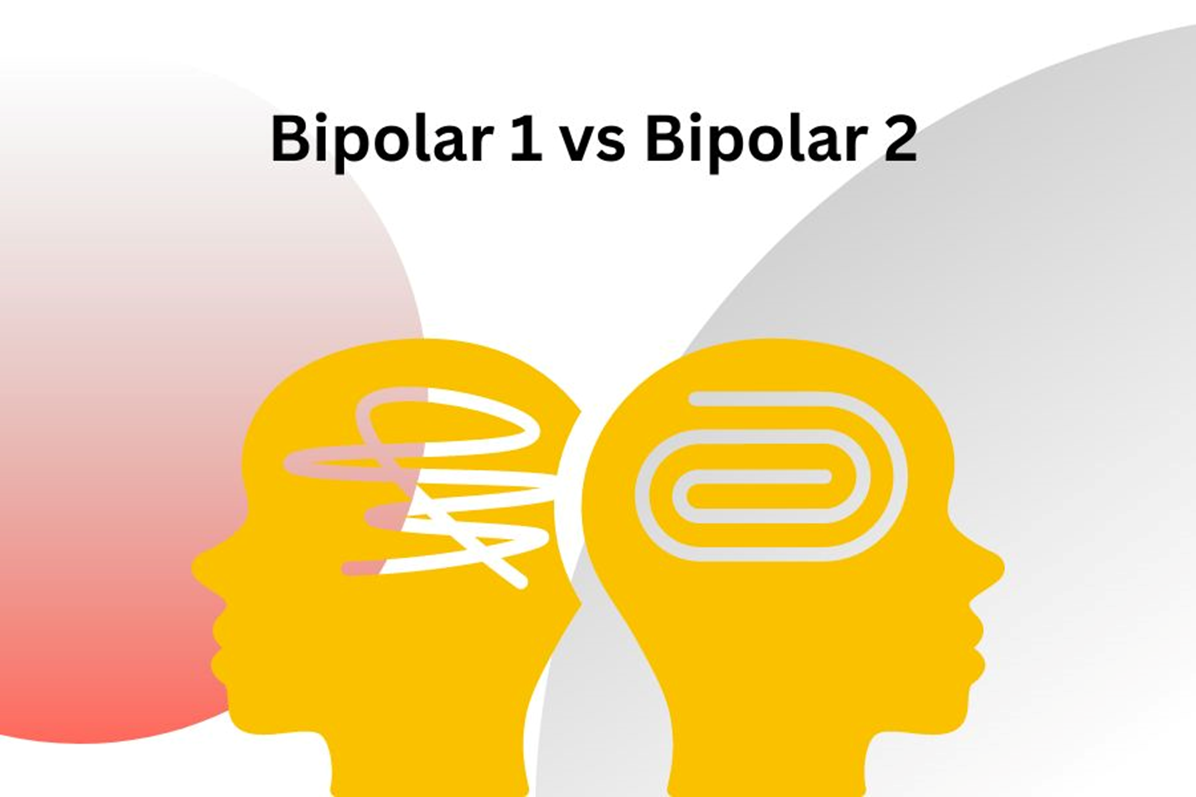
Bipolar 1 vs Bipolar 2 - What are the differences?

Bipolar disorder is described as a mental health disorder that causes extreme mood swings that include emotional highs and lows.
Episodes of mood swings may occur several times a year. While most people will experience some emotional symptoms between episodes, some may not experience any symptoms.
We all have our good and bad days. But for people living with bipolar disorder, intense shifts in mood are a much different issue.
There’s a marked difference between bipolar disorder and our everyday mood swings, In people with bipolar disorder, episodes of depression and mania are more extreme and debilitating than the normal shifts in mood. Bipolar disorder is a chronic mental health condition that causes dramatic changes in mood, energy levels, and behaviour. Mood episodes are classified as manic/hypomanic episodes when the main mood is intensely happy or irritable, or depressive episodes when there is an intense unhappy mood or the ability to experience joy or pleasure disappears.
People with bipolar disorder generally have periods of standard or usual mood as well. When treated, people with bipolar disorder can lead effective lives. Bipolar disorder can disrupt a person’s relationships with their loved ones and cause difficulty in everyday functioning as well.
Let’s look at The Differences between Bipolar 1 and Bipolar 2
| Criteria | Bipolar 1 | Bipolar 2 |
|---|---|---|
| Depression | Depression lasting at least 2 weeks. | Depression lasting at least 2 weeks. Tends to be longer lasting. |
| Mania | At least 1 episode of mania, lasting at least a week or may need hospitalization. | No episodes of mania. |
| Hypomania | May present symptoms of hypomania. | Experiences symptoms of hypomania |
| Psychosis symptoms | May experience delusions or hallucinations. | Does not experience delusions or hallucinations. |
| Hospitalization | May need hospitalization. | Does not require hospitalization. |
| Impact on everyday life | Likely to interfere significantly with daily activities. | Lowers the impact on the ability to manage daily activities. |
| Treatment options | Common treatments include a combination of medication and long-term therapy. Some people may require medication to treat symptoms specific to certain disorders. | Common treatments include a combination of medication and long-term therapy. |
Coping with Bipolar Disorder
Living with bipolar disorder can be very difficult, but there are ways to help make it uncomplicated
Work with a doctor to develop a treatment plan that is beneficial for you and stick with it. Treatment is the best way to work towards living a productive life.
- Follow the treatment plan as directed. Work with your doctor to adjust the plan, as required.
- Structure your activities. Try to have a routine for essential daily activities.
- Try regular, vigorous exercise like jogging, swimming, or bicycling, which can help with depression and anxiety, promote better sleep, and support your heart and brain health.
- Track your moods, activities, and overall health and well-being to help recognize your mood swings.
- Ask trusted friends and family members for help in keeping up with your treatment plan.
- Be patient. Improvement takes time. Staying in touch with sources of social support and family/friends that can help you.
Long-term therapy , ongoing treatment with doctors can help control the symptoms and enable you to live a productive life.
Since bipolar disorder can cause serious problems in a person’s everyday life and create stressful family and work situations, Guardians may also benefit from professional resources, particularly mental health advocacy and certain support groups of the disorder.
Treatment for bipolar disorder is a lifelong commitment, and it can take time to find the treatment plan that best works for you. From these sources and resources, families and friends can learn strategies and ways for coping, participating actively in the treatment plan, and obtaining the support that is needed. For many people, long-term therapy can help with the stresses of certain mood swings. Keeping a mood journal can be an effective way to observe patterns in mood fluctuation and help us manage our emotions.
If you have symptoms of Bipolar, see a psychiatrist or a mental health professional near you. Mental health providers can help you with an accurate diagnosis and suggest treatment options and plans. The sooner you get help, the sooner you will recover from it.
image credit : freepik

Mpowering Minds 2026 – Women’s Mental Health Summit: Championing a New Era of Well-Being
Therapy Approaches That Help Heal Intergenerational Trauma: CBT, DBT, Somatic Work & More

